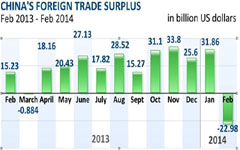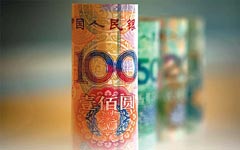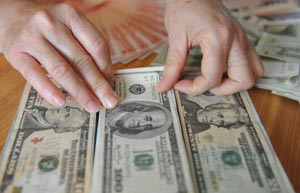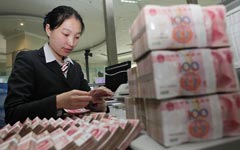Slide in exports as yuan depreciates confounds experts
By Shi Jing in Shanghai (China Daily) Updated: 2014-03-12 07:21The contraction of China's exports in February coincided with a rapid depreciation of the yuan, making the contraction even harder to explain and the outlook of China's exports this year even more unpredictable.
|
|
 |
 |
The recent depreciation of the Chinese yuan, which has dropped 1.2 percent against the US dollar to 6.1247 since Feb 18, mainly reflects the Chinese central bank's intention to create two-way currency movements.
"Large volatilities in Chinese export growth have not been uncommon, especially during the Lunar New Year period. However, the February print was much lower than our forecast of a growth of 1 percent and consensus of 7.5 percent," said Chang.
Regarding the outlook for China's exports this year, Chang said Barclays remains cautious, with a conservative export growth forecast of 9.3 percent year-on-year.
Zhu Ye, manager of Alchemist, a trading company specializing in the export of chemical products based in Changshu, in East China's Jiangsu province, has seen the chemical export industry remain almost static in the past few years with hardly any sign of improvement shown so far. The depreciation of the yuan helps a little with his business, especially for orders settled on a monthly basis.
"It's almost like an unexpected fortune to see the money in the account receivables increase because of the depreciation of the yuan. But for the orders settled over a longer-term basis, there is no benefit. It is too early to understand the real impact," said Zhu.
|
 |
 |
- NHTSA says finds no 'defect trend' in Tesla Model S sedans
- WTO rare earth ruling is unfair
- Amway says 2014 China sales may grow 8%
- President Xi in Europe: Forging deals, boosting business
- CNOOC releases 2013 sustainability report
- Local production by Chery Jaguar Land Rover this year
- Car lovers test their need for speed in BMW Mission 3
- China stocks close mixed Monday



















